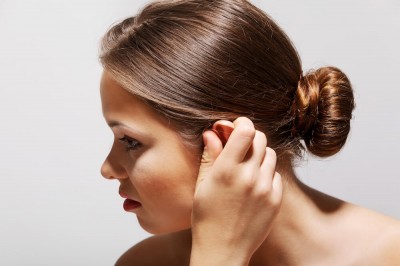Also known as brain tingles, ASMR has quickly become one of the biggest phenomena on the internet. People who experience it say that it provides a tingling feeling in the scalp and spine, coupled with euphoria, and an almost trance-like relaxation. However, these feelings are not experienced by everyone. Many people don’t experience ASMR, and can’t imagine feeling a tingling sensation watching someone brush their hair.
What Are ASMR Sounds?
There is a vast variety of sounds that constitute ASMR. Generally, it involves people doing incredibly simple, quiet, and calming tasks. Sounds like tapping, mundane tasks like flipping magazine pages, and even certain words trigger these relaxing feelings.
ASMR extends beyond the aural to the visual, as well. Hand moving, paint mixing, and light patterns are all popular ASMR videos. Of all the ASMR “genres”, the most popular is gentle whispering.
The Science of ASMR
The reality is that ASMR works for some and not for others. Researchers at the University of Sheffield conducted physiological studies on people who do and don’t experience ASMR. Both groups watched ASMR videos. The people who experienced ASMR showed a reduction in heart rate, the control group did not experience these same reductions. Researchers concluded that the feelings of relaxation and calmness brought on by ASMR sounds are a real response, not something faked.
As for the mechanisms at work behind ASMR, nobody is quite sure why some people react the way that they do. In 2015, two psychology researchers at Swansea University in Wales published the first peer-reviewed research study on the phenomenon. They surveyed 475 people who reported experiencing “the tingles.” They found that a sizable majority used ASMR sounds to help them sleep, and to deal with stress.
Overall, the research on ASMR, though in its infancy, is intriguing. Current theories suggest that ASMR may relieve some people’s symptoms of stress and insomnia and that the brains of those who experience it may be organized a little differently than those who don’t. As the researchers from the University of Sheffield stated: “findings indicate that ASMR is a reliable and physiologically-rooted experience that may have therapeutic benefits for mental and physical health.”
Relaxation and Sleep Sounds On Calm Radio
We have multiple ASMR-inspired sleep and relaxation channels for you to choose from. Whether you need a calm space in your office or some background noise to help lull you to sleep, try these free stations from Calm Radio:
Kitchen Sink: Listen to running water without driving up your water bill. It’s perfect white noise to help you sleep.
Calming Purrs: Like ASMR, science is slowly uncovering the power of a cat’s purr. It is the purrfect channel for creating a calm space at home (or if you are missing your cats when you’re away from home).
Air Conditioner: Considered pink noise, these sounds are slightly below white noise in the frequency range and can help deepen your sleep.
Private Jet: This channel is a classic example of the brown (Brownian) noise spectrum. The lower frequencies are prominent then taper off quickly as the frequency gets higher. Enjoy your flight!
Train: No ticket required for this train. Like the Private Jet channel, here is another example of classic Brown Noise. Common benefits associated with brown noise are relaxation, improved focus, and sleep improvement.
Experience all of our sleep sounds and relaxing music channel by registering for music streaming from Calm Radio. Happy listening!




